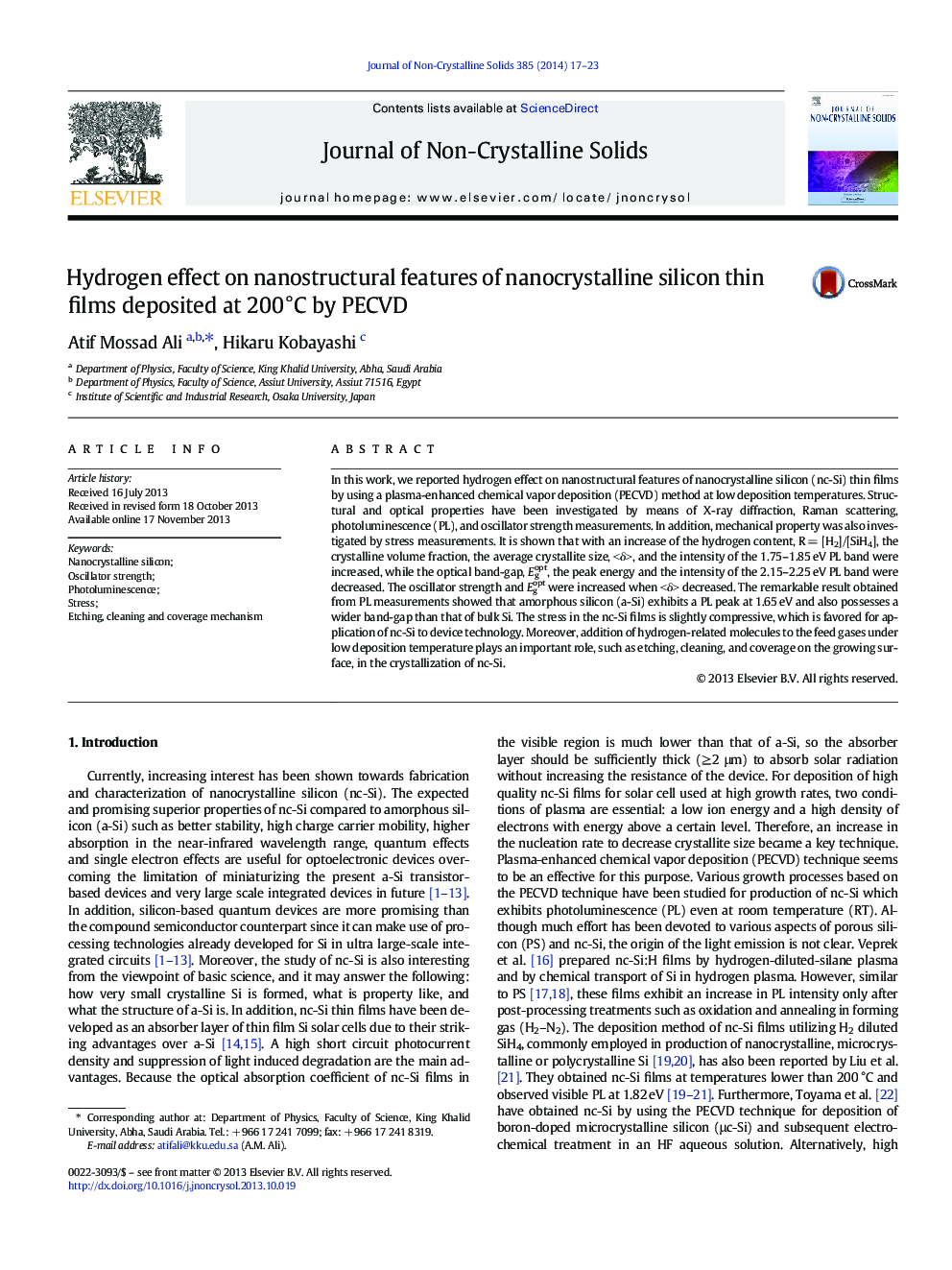| Article ID | Journal | Published Year | Pages | File Type |
|---|---|---|---|---|
| 1481132 | Journal of Non-Crystalline Solids | 2014 | 7 Pages |
•The crystalline quality (crystalline volume fraction) is improved with an increase in hydrogen.•The oscillator strength and Egopt increase with decreasing <δ>, due to the quantum size effect.•The shape of the grains is spherical and the nanocrystallites are distributed nearly uniformly.•The nc-Si films are suitable for integration in device structure.•The grown thin films could be used as protective coatings in the device.
In this work, we reported hydrogen effect on nanostructural features of nanocrystalline silicon (nc-Si) thin films by using a plasma-enhanced chemical vapor deposition (PECVD) method at low deposition temperatures. Structural and optical properties have been investigated by means of X-ray diffraction, Raman scattering, photoluminescence (PL), and oscillator strength measurements. In addition, mechanical property was also investigated by stress measurements. It is shown that with an increase of the hydrogen content, R = [H2]/[SiH4], the crystalline volume fraction, the average crystallite size, <δ>, and the intensity of the 1.75–1.85 eV PL band were increased, while the optical band-gap, Egopt, the peak energy and the intensity of the 2.15–2.25 eV PL band were decreased. The oscillator strength and Egopt were increased when <δ> decreased. The remarkable result obtained from PL measurements showed that amorphous silicon (a-Si) exhibits a PL peak at 1.65 eV and also possesses a wider band-gap than that of bulk Si. The stress in the nc-Si films is slightly compressive, which is favored for application of nc-Si to device technology. Moreover, addition of hydrogen-related molecules to the feed gases under low deposition temperature plays an important role, such as etching, cleaning, and coverage on the growing surface, in the crystallization of nc-Si.
